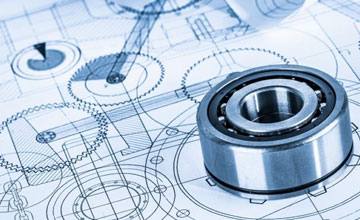
Ankit Srivastava
- Courses2
- Reviews6
- School: Texas A&M University
- Campus: College Station
- Department: Mechanical Engineering
- Email address: Join to see
- Phone: Join to see
-
Location:
College Station, TX - Dates at Texas A&M University: January 2016 - January 2019
- Office Hours: Join to see
Biography
Texas A&M University College Station - Mechanical Engineering
Resume
2011
Master of Science (MS)
Problems-in-lieu-of-thesis entitled \"From Newton's Universal Gravitation to Einstein's Geometric Theory of Gravity\".\nMajor Professor: Dr. Donald Kobe
Physics
The Honor Society of Phi Kappa Phi
Alpha Chi National College Honor Society
University of North Texas
2009
Doctor of Philosophy (PhD)
Dissertation entitled \"Mechanics and mechanisms of creep and ductile fracture\".\nDoctoral adviser: Dr. Alan Needleman
Materials Science and Engineering
The Honor Society of Phi Kappa Phi
Alpha Chi National College Honor Society
Exceptional Engineers-Volunteer Tutor
ASME
ASM Material Advantage
University of North Texas
Master of Science (MS)
Thesis entitled “Void Growth and Collapse in a Creeping Single Crystal”.\nThesis Adviser: Dr. Alan Needleman
Materials Science and Engineering
The Honor Society of Phi Kappa Phi
ASM Material Advantage
University of North Texas
2007
Post Graduate Diploma
Thesis entitled \"Plastic collapse and J-integral estimation of part-through circumferential cracks at intrados in pipe bends under in-plane bending moment\".\nMentor: Dr. K.M. Prabhakaran\nTraining School Batch # 51.\nRelevant Courses: Computational and Experimental Mechanics; Fracture and Damage Mechanics; Finite Element Method; Computational Fluid Dynamics; Materials and Corrosion; Nuclear Physics and Engineering; ASME (Design Codes) Section III
VIII
XI.
Engineering Sciences
Library Resource Management
Bhabha Atomic Research Centre Training School
2003
Bachelor of Technology (BTech)
Mechanical Engineering
Institution of Engineers (India)
Mechanical Engineering Forum
Kamla Nehru Institute of Technology
Exceptional Engineers Volunteer Tutor
University of North Texas
Denton
TX
Volunteer Tutor
Constitutive Modeling
Fracture Mechanics
Mathematica
Failure Analysis
Materials Modeling
Scanning Electron Microscopy
Physics
Solid Mechanics
Materials
Abaqus
Mathematical Modeling
Materials Science
Nanoindentation
Characterization
Engaging Public Speaker
Applied Mechanics
Finite Element Analysis
ANSYS
Mechanical Testing
Mechanics
Effect of inclusion density on ductile fracture toughness and roughness
Alan Needleman
V. Tvergaard
E. Bouchaud
L. Ponson
Three dimensional calculations of ductile fracture under mode I plane strain
small scale yielding conditions are carried out using an elastic-viscoplastic constitutive relation for a progressively cavitating solid with two populations of void nucleating second phase particles. Larger inclusions that result in void nucleation at an early stage are modeled discretely while smaller particles that require large strains to nucleate voids are homogeneously distributed. Full field solutions are obtained for eight volume fractions
ranging from 1% to 19%
of randomly distributed larger inclusions. For each volume fraction calculations are carried out for seven random distributions of inclusion centers. Crack growth resistance curves and fracture surface roughness statistics are calculated using standard procedures. The crack growth resistance is characterized in terms of both JIC and the tearing modulus TR. For all volume fractions considered
the computed fracture surfaces are self-affine over a size range of nearly two orders of magnitude with a microstructure independent roughness exponent of 0.53 with a standard error of 0.0023. The cut-off length of the scale invariant regime is found to depend on the inclusion volume fraction. Consideration of the full statistics of the fracture surface roughness revealed other parameters that vary with inclusion volume fraction. For smaller values of the discretely modeled inclusion volume fraction (≤7%)
there is a linear correlation between several measures of fracture surface roughness and both JIC and TR. In this regime crack growth is dominated by a void-by-void process. For greater values of the discretely modeled inclusion volume fraction
crack growth mainly involves multiple void interactions and no such correlation is found.
Effect of inclusion density on ductile fracture toughness and roughness
Effect of specimen thickness on the creep response of a Ni-based single-crystal superalloy
R Banerjee
A Staroselsky
V Seetharaman
A Needleman
Creep tests on Ni-based single-crystal superalloy sheet specimens typically show greater creep strain rates and/or reduced strain or time to creep rupture for thinner specimens than predicted by current theories
which predict a size-independent creep strain rate and creep rupture strain. This size-dependent creep response is termed the thickness debit effect. To investigate the mechanism of the thickness debit effect
isothermal
constant nominal stress creep tests were performed on uncoated PWA1484 Ni-based single-crystal superalloy sheet specimens of thicknesses 3.18 and 0.51 mm under two test conditions: 760 °C/758 MPa and 982 °C/248 MPa. The specimens contained initial microvoids formed during the solidification and homogenization processes. The dependence of the creep response on specimen thickness differed under the two test conditions: at 760 °C/758 MPa there was a reduction in the creep strain and the time to rupture with decreasing section thickness
whereas at 982 °C/248 MPa a decreased thickness resulted in an increased creep rate even at low strain levels and a decreased time to rupture but with no systematic dependence of the creep strain to rupture on specimen thickness. For the specimens tested at 760 °C/758 MPa microscopic analyses revealed that the thick specimens exhibited a mixed failure mode of void growth and cleavage-like fracture while the predominant failure mode for the thin specimens was cleavage-like fracture. The creep specimens tested at 982 °C/248 MPa in air showed the development of surface oxides and a near-surface precipitate-free zone. Finite-element analysis revealed that the presence of the alumina layer at the free surface imposes a constraint that locally increases the stress triaxiality and changes the value of the Lode parameter (a measure of the third stress invariant).
Effect of specimen thickness on the creep response of a Ni-based single-crystal superalloy
Srivastava
Brown University
University of North Texas
Texas A&M University
Bhabha Atomic Research Centre
Denton
Texas
Department of Material Science and Engineering\nAdviser: Dr. Alan Needleman
Graduate Research Assistant
University of North Texas
Mumbai
India
Reactor Engineering Division / Reactor Design and Development Group.
Scientific Officer
Bhabha Atomic Research Centre
School of Engineering\nAdviser: Dr. Allan F. Bower
Postdoctoral Research Associate
Providence
Rhode Island Area
Brown University
Department of Materials Science and Engineering
Dwight Look College of Engineering.
Assistant Professor
Bryan/College Station
Texas Area
Texas A&M University
English
Hindi
The Haythornthwaite Foundation Travel Award
The award is sponsored by the Haythornthwaite Foundation.
Applied Mechanics Division
ASME
First Place in the Best Student Paper Award
The award is sponsored by the Haythornthwaite Foundation and the ASME Applied Mechanics Division.
Applied Mechanics Division
ASME
Possible Matching Profiles
The following profiles may or may not be the same professor:
- Ankit Srivastava (80% Match)
Assistant Professor
Texas A&M University - Texas A&m University
